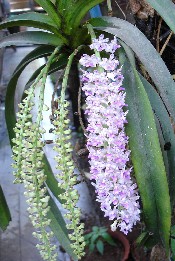
Assam - the land where you find flowers that are exquisitely
beautiful, animals that are rare, and a beleagured people that are proud
and inviting. It is the land of the mighty river Brahmaputra (the Luit)
and the one-horned rhinoceros.
Bihu is the national festival of Assam. The principal of the three
Bihus, Bohag or Rongali Bihu ushers in the Assamese New Year, in the
middle of April, and is celebrated with distinctive Bihu dances and
songs.
The name "Assam" is derived from the term "Asom" which, in Sanskrit,
refers to unequal or unrivalled. The uneven topography of the land, full
of hills, plains and rivers might, therefore, have contributed to her
name. The Mongolian Ahom dynasty which had ruled Assam for more than six
hundred years might also be the cause for her name.
Assam is a land with an illustrious recorded history going back to the
4th century BC. Assam was an independent kingdom throughout all of
history till the end of the first quarter of the 19th century when the
British conquered the kingdom and annexed it to British India. The
current state capital of Assam, Guwahati, known in ancient time as
Pragjyotishpura or The Eastern City of Light, was the capital of Kamrup
which finds frequent mention in the Great Hindu Epic Mahabharata and
other Sanskrit volumes and historical lores.
Assam Tea Gardens
Assam Tea
The state of Assam is the world's largest tea-growing region, lying on
either side of the Brahmaputra River, and bordering Bangladesh and Burma
(Myanmar). This part of India experiences high precipitation; during the monsoon
period, as much as 10 to 12 inches (250–300 mm) of rain per day. The
daytime temperature rises to about 103F (40 °C), creating greenhouse-like
conditions of extreme humidity and heat. This tropical climate contributes to
Assam's unique malty taste, a feature for which this tea is well known.
Though Assam generally denotes the distinctive black teas from Assam,
the region produces smaller quantities of green and white teas as well with
their own distinctive characteristics.
Historically, Assam has been the second commercial tea production region
after southern China. Southern China and Assam are the only two regions in the
world with native tea plants. Assam tea revolutionized tea drinking habits in
the 19th century since the tea, produced from a different variety of the tea
plant, yielded a different kind of tea.
A cute little farm house.
Golden Langur.
Gee's golden langur (Trachypithecus geei), or
simply the golden langur, is an Old World monkey found in a small region
of western Assam, India and in the neighboring foothills of the Black Mountains
of Bhutan. It is one of the most endangered primate species of India. Long
considered sacred by many Himalayan people, the Golden Langur was first brought
to the attention of science by the naturalist E. P. Gee in the 1950s. In a part
of Bhutan, it has hybridised with the Capped Langur.
Golden langur is known for its rich golden to bright
creamish hair, a black face and a very long tail measuring up to 50 centimetres
(20 in) in length. For the most part, the langur is confined to high trees
where its long tail serves as a balancer when it leaps across branches. During
the rainy season it obtains water from dew and rain drenched leaves. Its diet
is herbivorous, consisting of ripe and unripe fruits, mature and young leaves,
seeds, buds and flowers.
Bihu the Traditional Art of Assam
India is a country having plenty
of festivals and all the Indians celebrate it in a grand way. There is a lot of
preparation before every festival and the enthusiasm amongst people is really
surprising. Assam has a festival called Bihu. Bihu is the Biggest Festival of
Assam, one of the most beautiful states of India, known for its tea gardens,
lush green forests and the mighty Brahmaputra river.It is the celebration to
welcome seasons and it is vital for a farmer’s life in Assam. Although this
festival retained its originality it incorporated specific characteristics of
the city life. The origin of the word ‘Bihu" is said to be from the
Sanskrit word ‘Vishu’. There are three such festivals in Assam: in the months
of Bohaag (Baisakh, the middle of April), Maagh (the middle of January), and
Kaati (Kartik, the middle of October). The Bihus have been celebrated in Assam
from ancient times.
The Traditional Attire of Assam.





Kaziranga National park of Assam
Kaziranga National Park lies partly in Golaghat District and
partly in Nagaon District of Assam. It is the oldest park in assam covers an
area of 430 Sq kms along the river Brahmaputra on the North and the Karbi
Anglong hills on the South. Kaziranga National Park a world heritage site is
famous for the Great Indian one horned rhinoceros, the landscape of Kaziranga
is of sheer forest, tall elephant grass, rugged reeds, marshes & shallow
pools. The park is open from November to April. Tourists can take rides on
elephants to move around the park or cruise in a boat on the Brahmaputra along
the park.
Guwahati the largest city of Assam
Kamakhya Temple

No comments:
Post a Comment